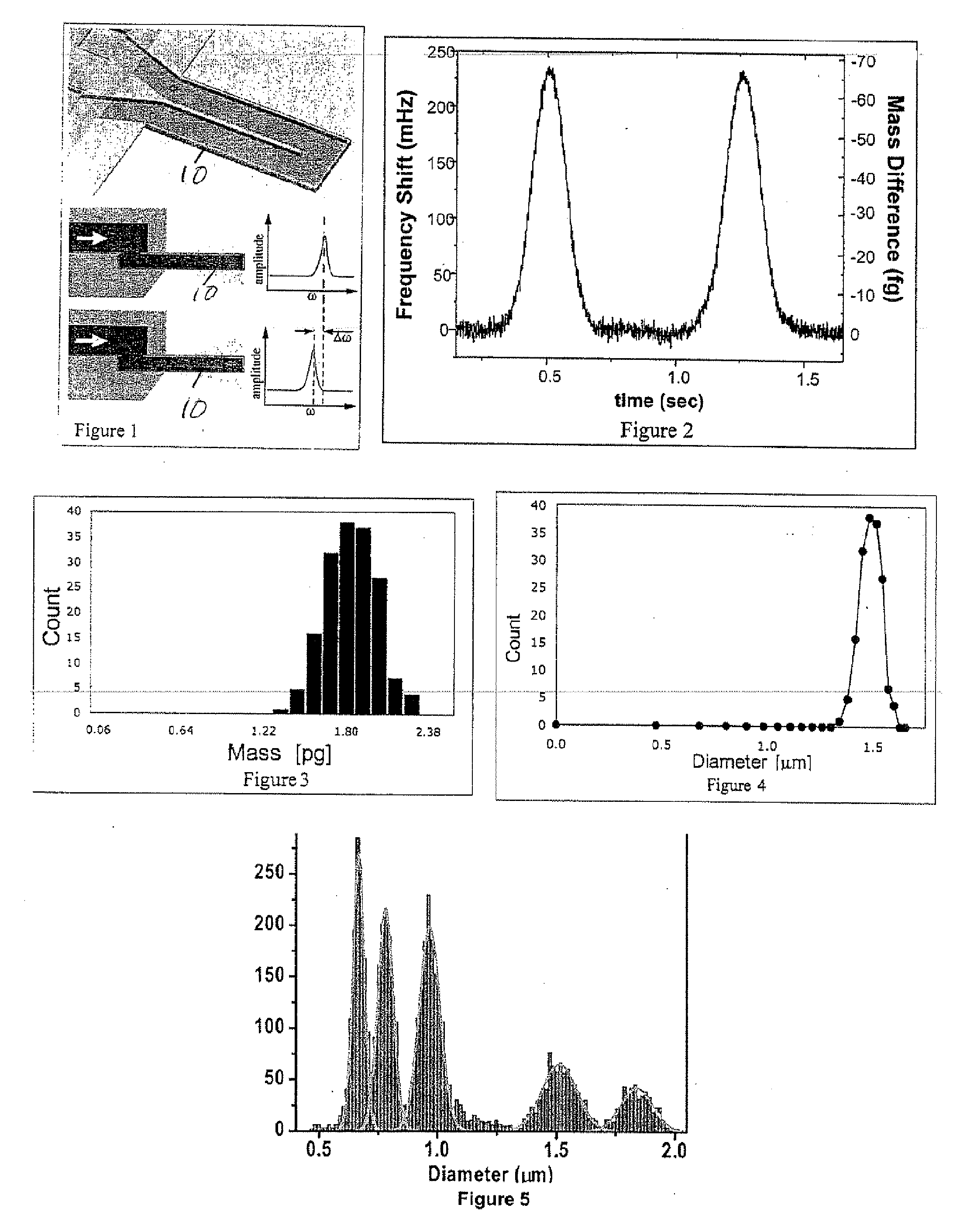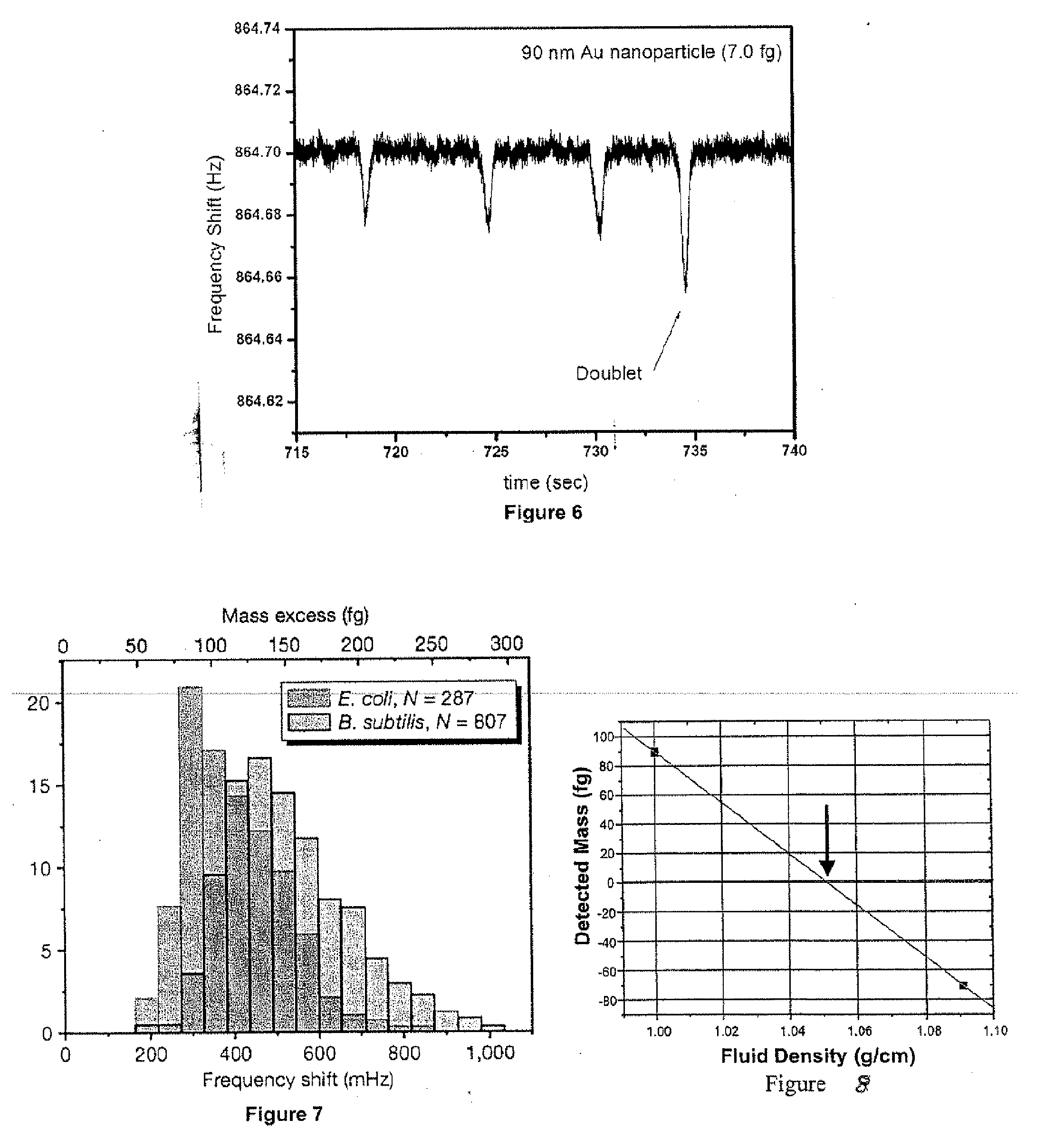Method And Apparatus For Measuring Particle Characteristics through Mass Detection
a technology of mass detection and particle characteristics, applied in the field of methods, can solve problems such as errors in estimated size, difficulty in accurately determining particle size, and light scattering suffering from certain limitations
- Summary
- Abstract
- Description
- Claims
- Application Information
AI Technical Summary
Benefits of technology
Problems solved by technology
Method used
Image
Examples
Embodiment Construction
[0025]Here we propose a new method for measuring the mass, size, and density of particles whose sizes range from the nanometer scale to many microns. The method employs a recently-introduced mass sensor known as the suspended microchannel resonator (SMR) [Burg and Manalis 2003; Burg 2007]. The SMR uses a fluidic microchannel embedded in a resonant structure, one type being in the form of a cantilever 10 (FIG. 1). The top diagram in FIG. 1 is cutaway to show the microchannel interior, but in fact the channel is fully enclosed. Target particles are carried through the sensor in a fluid, and their contribution to the total mass within the sensor causes the resonance frequency of the sensor to change in relation to the particle mass. By using microfabrication techniques, SMR sensors can be fabricated with mass resolution of less than 1 femtogram (10−15 g). This resolution is sufficient to detect and measure the mass of individual particles in the range of several nanometers up to many m...
PUM
| Property | Measurement | Unit |
|---|---|---|
| sizes | aaaaa | aaaaa |
| sizes | aaaaa | aaaaa |
| mass resolution | aaaaa | aaaaa |
Abstract
Description
Claims
Application Information
 Login to View More
Login to View More - R&D
- Intellectual Property
- Life Sciences
- Materials
- Tech Scout
- Unparalleled Data Quality
- Higher Quality Content
- 60% Fewer Hallucinations
Browse by: Latest US Patents, China's latest patents, Technical Efficacy Thesaurus, Application Domain, Technology Topic, Popular Technical Reports.
© 2025 PatSnap. All rights reserved.Legal|Privacy policy|Modern Slavery Act Transparency Statement|Sitemap|About US| Contact US: help@patsnap.com



